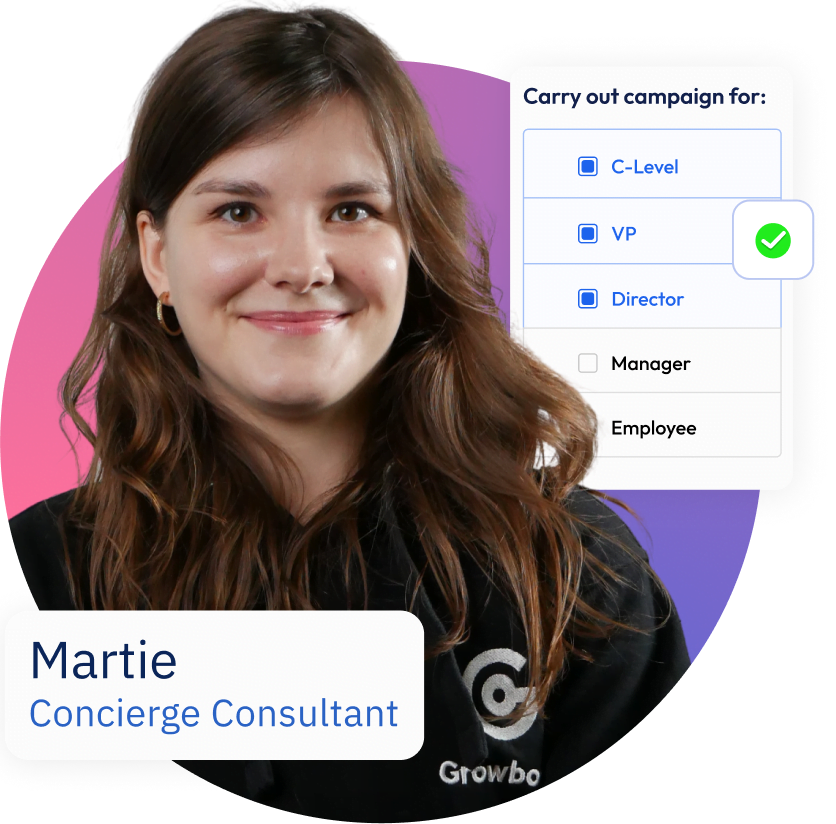We hate receiving spam. Our mailboxes are always full of unread emails which pile up and we feel that we lose control over them.
But we love receiving messages which bring us value. What is the key to success? How to become a salesman who sends useful emails instead of boring and inappropriate ones?
The key issue in outbound is putting pressure on quality, not quantity. It is not about sending thousands of emails to random people but rather preparing a personalised communication to the proper prospects. If you find people who probably need your solution and you send them messages bringing value, it will not be considered as spam. However, how to define such prospects? How to maintain high standards in communication? And what to do if it’s too late and you’ve already got blacklisted?
Targeting the right people
It’s really important to know who you want to contact and why. If you reach out to the right people, there is a higher possibility they will be interested in your product. When you just send out emails to random prospects, they will consider your messages as irrelevant and mark them as spam.
Find your market-fit
Before starting outbound, you should define your ideal customer profile – determine in which industry the potentially best companies for you operate, how many employees they have and where they are located. It’s also important to know which decision-makers are usually interested in your product – don’t contact technology directors if your product will be used by salespeople. If you are not sure who your perfect customers might be, analyse your current clients, check what they have in common and why they use your product. This is an easy way to find a market fit.
After a campaign, analyse both your positive and negative replies. Check who was interested in your product and determine the factors which make them similar. What’s more, negative feedback can be even more precious – note the reasons for non-interest in your product and validate your ideal customer profile. The more precise you are with prospect selection, the higher chances are that your message will be well-received.
Bringing real value
 Know your prospects
Know your prospects
When you find people who may be interested in your offer, use your knowledge about them and adjust messages to their needs. You should know what problems they encounter every day, so try to show how your company can help. Take into account that C-level and managers meet various obstacles and have different expectations – don’t be “that” salesman and adjust your communication to the prospects’ job position or type of business. Don’t try to sell the product via email – its main goal should be getting in touch and making the prospects interested. Show what problems you can solve and let the proper time for sale come later. Write your message as if it was from one friend to another, without pushing. Then read it again and ask yourself whether you would like to receive such an email. It’s also great when you are able to show that you share similar interests with your prospects. Thanks to this, you can get people curious. If they see the message is relevant, they will not mark you as spam.
Good practice:

Bad practice:

To learn how to write a killer email campaign, read this blog post.
Timing
You cannot do outbound without follow-ups, but remember to respect the prospects you are contacting and not to send messages too often. Don’t send emails every two days at the same time. The first follow-up can be delivered after three days, but leave longer pauses for the rest. No one enjoys being overwhelmed with the emails they don’t want or don’t have time to reply.
Make the communication user-friendly
It’s also important to write your messages in a casual style. Avoid inserting too many links, especially the shortened ones such as bit.ly, and attaching files or pictures. The more sophisticated your formatting is, the higher the chances that spam filters will catch your messages. Be aware that some specific words and expressions can automatically mark you as a spammer: “offer” and “free” will not escape the spam filters’ notice. You can read more about them on the Hubspot blog.
Always give an opt-out option. It’s worth to gently underline that the prospects can unsubscribe from getting more messages. If they reply in a negative way, just remit it or kindly thank for the message and ask to let you know in case they change their mind. Take care with invalid email addresses, and try to keep your bounce rate as low as possible.
Don’t blame the blacklists
We all should love spam filters, really! Thanks to them we do not get spam into our mailboxes and we save our precious time. What’s more, they just encourage us to send high-quality communication. If we prepare our communication according to the best practices, we don’t need to worry about them.
Sending multiple campaigns
Outbound is a great way to grab a lot of warm leads while spending a little time on it. However, it doesn’t mean you should do it without a strategy – each email operator has daily limits (e.g. 200–300 emails in Gmail). We recommend you create more email channels such as firstname@domain.com or firstname.lastname@domain.com and send about 100–130 messages daily from each one. Even if you send messages from different email addresses, try to have a pause of about 1.5 hours between batches. Schedule the first campaign for 9 a.m, the next for 10.30 a.m, then noon, etc. – spam filters not only check how many messages you send from one channel but also consider the domain.
If you do outbound, juggling different messages is a must have. Try not to send the same email campaign twice in a row from one domain. If one of your templates is extremely successful and you want to use it the most, prepare at least two versions of it for each email channel and change it regularly – we recommend every two weeks. Keep the same framework and simply rewrite some of the sentences using synonyms. This way you keep high standards and great quality of your communication.
A good practice is to use custom fields (parameters changing according to the contacts’ details) in the subject line (e.g. {{ first_name }}). Thanks to this, almost every message will be sent with a different subject and will not look like an automated email.
Take care of your domain
It is very important to take care of your domain and not spoil its reputation. When you do outbound, a good idea is to have more domains (e.g. company.com and company.co), as they are two separate entities. You can, for instance, send two batches of emails at the same time. Also, with the less important domain, you could try more risky tests – different target groups and campaigns.
When you create a new domain, you need to use it for a while to allow its reputation to build. Send emails to your friends, coworkers and existing customers, and wait for their replies. When you’ve created natural traffic, you will be ready to start doing outbound.

Keep your finger on the pulse
Even if you do your best to avoid being marked as spam, you need to constantly monitor your domain’s and IP’s reputation. The easiest way is to keep an eye on your open rates. If you notice a sudden drop in this metric, it’s time for more advanced analysis of your mailbox. To check whether you have been caught by Gmail spam filters, send a message to any Gmail address you haven’t been in touch with yet.
There are also a lot of websites and tools that can check your email server reputation score. If you use Gmail, we recommend mail-tester.com, which offers a deep analysis of both your message and your mailbox. You can check how the content you send is assessed by spam filters and whether your server, IP address or domain are authenticated. The test also checks if you appear on any of the 22 most common blacklists. Do not panic if you notice your score is not 10/10 – over 7/10 is a really good result. Always analyze where you lost your points and try to improve your weaknesses.
When it’s too late . . .
Getting off blacklists
It may happen that your IP address or email gets blacklisted. It’s not the end of the world, but you should do your best to get it removed. Each blacklist has its own procedures for getting de-listed. The most popular ones are self-service and time-based removal methods. When you know the name of the blacklist you are on, you should find information about how to proceed – maybe it will be enough to wait one or two weeks. When you appear on a blacklist for the first time, getting removed is not very complicated. However, after such an incident, you need to be much more careful. Being listed for the second time will cause a lot of trouble and the removal process will be much more complex.
It’s worth keeping in mind that there are not only blacklists but whitelists, too. Appearing on such a list shows that the IP address/domain is trustworthy and allows all messages to be delivered.
The key to success in outbound is to base your strategy on sending the high-quality communication which is adjusted to your recipients and brings them value. Being aware of your potential customers’ needs let you adjust the messages you send and offer them helpful solutions. Have you been marked us spam? You are doing it wrong. But you still have one chance. Work on your domain’s and IP address’ reputation, and take care of maintaining high standards in the future. With high response rate, you will never be considered as spam.
TL;DR? A few most important lessons about spam:
- Send messages to the people who meet criteria of your ideal customer profile
- Analyse both positive and negative feedback from your prospects
- Make messages relevant to the people needs
- Keep longer pauses between follow-ups
- Avoid sophisticated formatting, links, pictures and attachments
- Give an opt-out option
- Send about 100-130 messages from one email address daily
- Keep at least 1.5 hours pauses between sending batches from one domain
- Juggle different templates, don’t send the same one two times in a row
- Do tests assessing your server reputation
- If you get blacklisted, take proper actions to be removed
And how do you care about the quality of your communication?























